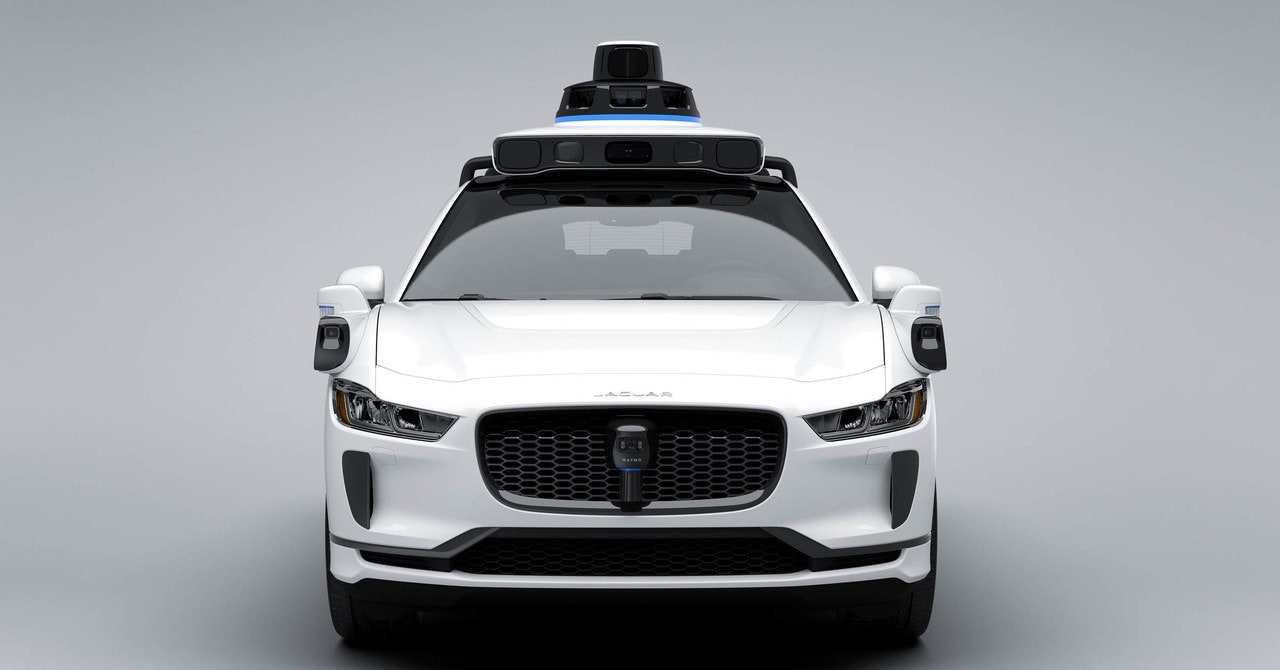If you’re in Mountain View and you spot a self-driving car, the smart money says it’s one of Waymo’s modified Chrysler Pacifica minivans. If you see an electric car, it’s most likely a Tesla. But the odds on both are set to change. Waymo is rolling out its new fleet of roboticized, all-electric Jaguar I-Pace SUVs, a robotic armada that over the next two years will grow to as many as 20,000.
At first glance, the newly outfitted I-Paces don’t look much different from the mocked-up version Waymo showed off nearly two years ago, when it announced a partnership with Jaguar. A closer look reveals a bigger shift offering hints about the future of autonomous vehicles. The two rooftop lidars on the Pacificas have been compressed into one unit that can handle both medium- and long-range sensing. The perimeter lidars near the wheels have been joined by “perimeter cameras.” A lidar and camera sit on the grille, where you’d normally see Jaguar’s roaring cat logo. And so on.
To borrow an auto industry phrase, this is more than a “facelift,” a package of minor changes designed to refresh a stale model. Over the past several years, hundreds of Waymo engineers have rebuilt most of the company’s self-driving hardware, chiefly the cameras, lidars, and radars that perceive the world around the car. They did almost all of the work in-house and from scratch. Now the electric Jaguar (which Waymo, inexplicably, declined to dub the I, Robot-Pace) is the first vehicle to benefit from the company’s fifth generation hardware suite.
All told, the vehicle can now see farther and in more detail, says Satish Jeyachandran, Waymo’s hardware lead. The cameras, for example, now collect useful data from more than 500 meters out. All the sensors can see through and survive in nasty weather. The system can be readily reconfigured to work as well on Waymo’s 18-wheeler as on the I-Pace. Just as important, Waymo says it can produce the components in adequate numbers for a commercial self-driving fleet. “We wanted this generation to be much more scalable and manufacturable and reduce the costs of the system by half,” Jeyachandran says. “I’m super confident that we are pretty close to achieving all of these metrics.”
Waymo’s hardware engineers built the system’s sensors from scratch, and added new “perimeter cameras” to detect objects very close to the vehicle.
Courtesy of WaymoThe new toolkit is the result of a long running, if quiet, push by the Alphabet subsidiary to invent its own hardware. When Waymo started life in 2009 as Google’s Project Chauffeur, it stuck off-the-shelf sensors on Toyota Priuses purchased at a local dealership. That included a roughly $80,000 rooftop lidar from Velodyne, which dominated the early laser scanner market. Soon, the Googlers d

